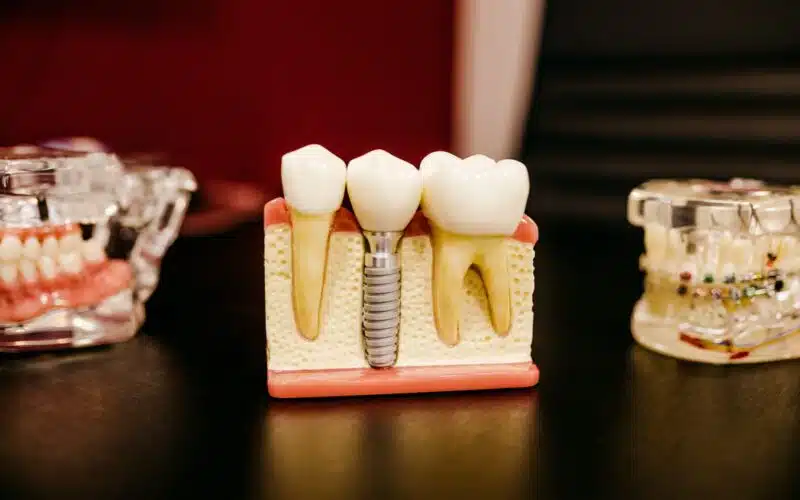Embracing the Magic of Dental Implants
Dental implants have revolutionized the field of dentistry, offering a remarkable solution for replacing missing teeth and restoring smiles. With their ability to provide a sturdy foundation for artificial teeth, dental implants have become a preferred choice for many individuals seeking a long-term and natural-looking tooth replacement option.
In this comprehensive guide, we will embark on an enchanting journey through the world of dental implants. We will explore the different types of dental implants, discuss how to prepare for the implant procedure and delve into the crucial steps to take after the implants are placed. Additionally, we will uncover the secrets to proper implant care and maintenance, ensuring a lifetime of dental brilliance.
1. The Magic of Dental Implants: Understanding the Basics
Before we dive into the intricacies of dental implants, let us first grasp the fundamental concept behind these remarkable dental marvels. Dental implants are artificial tooth roots made of biocompatible materials, typically titanium, which are surgically placed into the jawbone. Once integrated with the surrounding bone, they provide a solid foundation for mounting replacement teeth or dental prostheses.
By mimicking the structure and function of natural teeth, dental implants offer numerous benefits, including improved chewing ability, enhanced speech, and increased self-confidence. Unlike traditional dentures or bridges, dental implants provide a secure and permanent solution that can last a lifetime with proper care.
2. Types of Dental Implants: Unveiling the Array of Options
Dental implant technology has advanced significantly, resulting in a diverse range of implant types suitable for various situations. Let’s uncover the different types of dental implants available today:
a. Endosteal Implants
Endosteal implants are the most common type of dental implants. These implants are typically screw-shaped and are directly inserted into the jawbone during a surgical procedure. Once the implant has fused with the bone, an abutment is attached to it, which serves as a connector for the artificial tooth or dental prosthesis.
b. Subperiosteal Implants
Subperiosteal implants are an alternative to endosteal implants for individuals with insufficient jawbone height or density. Instead of being inserted into the jawbone, subperiosteal implants rest on top of the bone and are held in place by a metal framework that lies beneath the gum tissue. Once the gums heal, the replacement teeth are mounted onto the posts protruding from the gums.
c. All-on-4 Implants
All-on-4 implants provide a revolutionary solution for patients who require full arch restoration. This technique utilizes only four strategically placed implants to support a full set of upper or lower replacement teeth. All-on-4 implants offer several advantages, including reduced treatment time and increased stability compared to traditional dentures.
d. Mini Dental Implants
Mini dental implants, also known as MDIs, are smaller in diameter than standard implants. They are often used when there is inadequate bone mass to support traditional implants. MDIs are less invasive, require a shorter healing period, and can be an excellent option for stabilizing dentures.
By understanding the different types of dental implants available, individuals can work together with their dentists to determine the most suitable option based on their specific needs and oral health conditions.
3. Preparing for Dental Implants: Your Journey Begins
The road to successful dental implantation begins with thorough preparation. Adequate preparation not only enhances the chances of a successful outcome but also ensures a smoother overall experience. Let’s explore the crucial steps involved in preparing for dental implants:
a. Oral Health Assessment
Before undergoing dental implant surgery, a comprehensive oral health assessment is necessary. This assessment involves a thorough examination of the teeth, gums, and supporting structures, along with diagnostic imaging such as X-rays or CT scans. The assessment helps identify any underlying oral health issues that need to be addressed before the implant procedure.
b. Treatment Planning
Once the oral health assessment is complete, your dentist will develop a personalized treatment plan tailored to your specific needs. This plan will outline the number and placement of implants required, the type of restoration to be used, and the anticipated timeline for the entire treatment process.
c. Managing Pre-existing Conditions
Certain pre-existing medical or dental conditions may impact the success of dental implant surgery. Conditions such as diabetes, gum disease, or a history of radiation therapy may require special considerations and additional treatment steps to ensure a favorable outcome. Collaborating closely with your dentist and providing complete medical history will help mitigate any potential risks.
d. Lifestyle Adjustments
Preparing for dental implants also involves making certain lifestyle adjustments in the weeks leading up to the surgery. These may include quitting smoking, limiting alcohol consumption, and maintaining a nutritious diet to optimize healing and minimize the risk of complications.
By diligently following the preparation steps and collaborating closely with your dental team, you can lay a solid foundation for a successful dental implant journey.
4. The Dental Implant Procedure: From Consultation to Completion
The dental implant procedure comprises several stages, each crucial for the overall success and longevity of the implants. Understanding these stages will empower you with knowledge and confidence as you embark on your implant journey:
a. Initial Consultation
During the initial consultation, your dentist will evaluate your oral health, discuss treatment options, and address any concerns or questions you may have. This consultation serves as an opportunity to establish a rapport with your dental team and ensure a comprehensive understanding of the treatment process.
b. Implant Placement Surgery
Implant placement surgery is a minor surgical procedure that involves the precise placement of the implant into the jawbone. It is typically performed under local anesthesia to ensure patient comfort. After the implants are inserted, a period of healing, known as osseointegration, takes place. This allows the implants to fuse with the bone, creating a stable and durable foundation.
c. Abutment Placement
Once the osseointegration period is complete, a second minor surgery is performed to attach the abutment to the implant. The abutment serves as a connector between the implant and the artificial tooth or dental prosthesis. The gum tissue is then allowed to heal around the abutment, ensuring a snug fit.
d. Restoration Placement
After the gums have healed, the final step involves the placement of the restoration, which may be a crown, bridge, or denture, depending on the number of missing teeth and the treatment plan. The restoration is custom-designed to match the color, shape, and size of your natural teeth, providing a seamless and aesthetically pleasing result.
5. Post-Implant Care: Nurturing Your New Smile
After the dental implant procedure, proper post-operative care is essential to ensure optimal healing and long-term success. Let’s explore the key aspects of post-implant care:
a. Pain Management and Recovery
Following the implant surgery, it is normal to experience some discomfort, swelling, or bruising. Your dentist will provide detailed instructions on pain management techniques, including prescribed medications, cold compresses, and proper oral hygiene practices to alleviate any discomfort and promote a smooth recovery.
b. Oral Hygiene Practices
Maintaining excellent oral hygiene is crucial for the long-term success of dental implants. Your dentist will provide specific instructions on brushing, flossing, and using antimicrobial mouth rinses to keep the implant area clean and free from infection. Regular dental check-ups and professional cleanings will also be necessary to monitor the health of the implants and surrounding tissues.
c. Dietary Considerations
In the initial stages of recovery, it is advisable to consume soft or liquid foods to avoid exerting excessive pressure on the implant area. As healing progresses, a gradual transition to a normal diet can be made. However, it is important to avoid chewing on hard or sticky foods that could potentially damage the implants or restoration.
d. Lifestyle Factors
Certain lifestyle factors can impact the longevity and success of dental implants. Avoiding habits such as smoking, excessive alcohol consumption, and teeth grinding (bruxism) is essential. Additionally, wearing a mouthguard during sports activities or teeth grinding can protect the implants and surrounding teeth from potential trauma.
By diligently following post-implant care instructions and maintaining a healthy lifestyle, you can nurture your new smile and enjoy the benefits of dental implants for years to come.
6. Long-Term Implant Maintenance: Ensuring Lasting Enchantment
While dental implants are designed to be durable and long-lasting, proper maintenance is essential to preserve their functionality and aesthetic appeal. Here are the key elements of long-term implant maintenance:
a. Regular Oral Hygiene Routine
Maintaining a diligent oral hygiene routine is crucial for the ongoing health of your implants. Brushing at least twice a day with a soft-bristled toothbrush and fluoride toothpaste, along with daily flossing, will help remove plaque and bacteria, preventing gum disease and implant-related complications.
b. Professional Cleanings and Check-ups
Regular dental visits, typically every six months, are necessary to monitor the health of your implants and ensure early detection of any potential issues. Your dentist or dental hygienist will perform professional cleanings to remove any stubborn plaque or tartar buildup and assess the integrity of the implant-restoration complex.
c. Implant-Specific Maintenance
In addition to general oral hygiene practices, there are specific maintenance techniques for dental implants. These may include using interdental brushes or water flossers to clean hard-to-reach areas around the implants, as well as antimicrobial mouth rinses to maintain a healthy oral environment.
d. Protecting Against Teeth Grinding
If you suffer from bruxism or teeth grinding, it is crucial to protect your implants and natural teeth from excessive force. Your dentist may recommend a custom-made nightguard or splint to wear while sleeping, which will help alleviate the pressure on the implants and prevent potential damage.
By incorporating these long-term maintenance practices into your oral care routine, you can ensure the lasting enchantment of your dental implants.
7. Common Concerns and FAQs: Enlightening Insights
As you embark on your dental implant journey, it is natural to have questions and concerns. Let’s address some of the most common inquiries and provide enlightening insights:
a. Are dental implants suitable for everyone?
Dental implants are a versatile tooth replacement option, but not everyone is an ideal candidate. Factors such as overall health, oral health condition, bone density, and lifestyle habits play a significant role in determining the suitability of dental implants. A comprehensive consultation with your dentist will help assess your eligibility and explore alternative options if necessary.
b. How long do dental implants last?
With proper care and maintenance, dental implants have the potential to last a lifetime. However, individual factors such as oral hygiene practices, lifestyle choices, and overall health can influence the longevity of implants. Regular dental check-ups and adherence to oral hygiene protocols will significantly contribute to the durability of your dental implants.
c. Does the implant procedure involve pain?
During the implant surgery, local anesthesia is administered to ensure a comfortable and pain-free experience. After the procedure, some discomfort, swelling, or bruising is common. However, prescribed pain medications and following post-operative care instructions will help manage any pain effectively.
d. Can dental implants be done in a single visit?
The dental implant process typically requires multiple stages and appointments. From the initial consultation to the final restoration placement, the entire journey may take several months. This timeline allows for proper healing, osseointegration, and the fabrication of custom-made restorations for a precise fit and aesthetic result.
By addressing these common concerns and providing insightful answers, we aim to empower you with knowledge and alleviate any anxieties related to dental implants.
8. The Future of Dental Implants: Exploring Emerging Innovations
The field of dental implantology continues to evolve, with ongoing advancements and innovations shaping the future of tooth replacement. Here are some emerging trends and technologies that hold promise for the future of dental implants:
a. Digital Dentistry and Guided Implant Surgery
Advancements in digital dentistry, including cone beam computed tomography (CBCT) imaging and computer-aided design/computer-aided manufacturing (CAD/CAM) technology, have revolutionized implant treatment planning and surgical precision. Guided implant surgery allows for highly accurate implant placement, minimizing surgical risks and enhancing patient outcomes.
b. Zygomatic and Pterygoid Implants
Zygomatic and pterygoid implants are innovative solutions for individuals with severe bone loss in the upper jaw. These implants anchor into the cheekbone or the pterygoid process, bypassing the need for bone grafting procedures. This technique provides a viable option for patients who were previously deemed unsuitable for traditional implant placement.
c. Tissue Engineering and Regenerative Therapies
Researchers are actively exploring tissue engineering and regenerative therapies to enhance the success and efficiency of dental implants. By incorporating growth factors, stem cells, and biomaterials, these advancements aim to stimulate bone and soft tissue regeneration, improving implant integration and long-term stability.
As the future unfolds, dental implant technology will continue to push boundaries, offering enhanced treatment options and improved patient experiences.
Conclusion: A Radiant Smile Awaits
The journey to dental implants is nothing short of enchanting. From understanding the magic of dental implants to preparing for the procedure, undergoing the implantation process, and embracing lifelong implant care, each step contributes to the transformation of your smile.
By following the comprehensive guide provided in this article, you are equipped with the knowledge and insights necessary to navigate the world of dental implants with confidence. Remember, dental implants not only restore missing teeth but also bring back the radiance, confidence, and joy of a beautiful smile.
Embrace the enchanting journey of dental implants, and let the magic unfold. Your radiant smile awaits.
Common Concerns and FAQs: Enlightening Insights
As you embark on your dental implant journey, it is natural to have questions and concerns. Let’s address some of the most common inquiries and provide enlightening insights:
Q: Are dental implants suitable for everyone?
A: Dental implants are a versatile tooth replacement option, but not everyone is an ideal candidate. Factors such as overall health, oral health condition, bone density, and lifestyle habits play a significant role in determining the suitability of dental implants. A comprehensive consultation with your dentist will help assess your eligibility and explore alternative options if necessary.
Q: How long do dental implants last?
A: With proper care and maintenance, dental implants have the potential to last a lifetime. However, individual factors such as oral hygiene practices, lifestyle choices, and overall health can influence the longevity of implants. Regular dental check-ups and adherence to oral hygiene protocols will significantly contribute to the durability of your dental implants.
Q: Does the implant procedure involve pain?
A: During the implant surgery, local anesthesia is administered to ensure a comfortable and pain-free experience. After the procedure, some discomfort, swelling, or bruising is common. However, prescribed pain medications and following post-operative care instructions will help manage any pain effectively.
Q: Can dental implants be done in a single visit?
A: The dental implant process typically requires multiple stages and appointments. From the initial consultation to the final restoration placement, the entire journey may take several months. This timeline allows for proper healing, osseointegration, and the fabrication of custom-made restorations for a precise fit and aesthetic result.
Q: How long is the recovery period after dental implant surgery?
A: The recovery period after dental implant surgery can vary depending on individual factors and the complexity of the case. Generally, it takes a few days to a week for the initial discomfort, swelling, and bruising to subside. However, complete healing and osseointegration can take several months. Your dentist will provide specific guidelines and monitor your progress during the recovery period.
Q: Are there any risks or complications associated with dental implants?
A: While dental implants have a high success rate, like any surgical procedure, there are potential risks and complications. These can include infection, implant failure, nerve damage, sinus problems (in the case of upper jaw implants), or complications related to anesthesia. However, with proper planning, meticulous surgical techniques, and adherence to post-operative care instructions, the risks can be minimized.
Q: Will dental implants look and feel like natural teeth?
A: One of the remarkable aspects of dental implants is their ability to closely mimic the look, feel, and function of natural teeth. The restorations, such as crowns or dentures, are custom-designed to match the color, shape, and size of your natural teeth, providing a seamless and natural-looking result. With dental implants, you can enjoy a restored smile that blends harmoniously with your remaining teeth.
Q: How much do dental implants cost?
A: The cost of dental implants can vary depending on several factors, including the number of implants needed, the type of restoration, additional procedures required (such as bone grafting), and geographical location. Dental insurance coverage may also impact the cost. It is best to consult with your dentist, who can provide a detailed cost estimate based on your specific needs and treatment plan.
By addressing these common concerns and providing insightful answers, we aim to empower you with knowledge and alleviate any anxieties related to dental implants. Remember, open communication with your dentist is key to ensuring a personalized treatment plan and a successful dental implant journey.





























